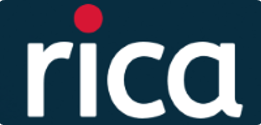Submissions
Submission Preparation Checklist
As part of the submission process, authors are required to check off their submission's compliance with all of the following items, and submissions may be returned to authors that do not adhere to these guidelines.- The contribution is original and unpublished and is not being evaluated for publication by another journal.
- The submission file is in Microsoft Word, OpenOffice or RTF format.
- Where available, URLs for references have been provided.
- The text follows the style standards in accordance with the journal's guidelines; figures, tables, and plots are included in the text, not at the end of the document or as attachments.
- The text follows the style standards and bibliographic requirements described in Guidelines for Authors, on the 'About the Journal' page.
- At submission, the title, abstract, and keywords must be added to the journal system in English, Portuguese, and Spanish, regardless of paper language.
- RICA discourages the use of any kind of generative AI in the writing of papers, regardless of the journal section it applies. The identification of extensive use of AI tools in a paper imply its immediate rejection and return to authors. The journal does, however, acknowledge the use of AI tools in grammar as spelling checks. However, if any kind of AI tool is used in the paper, this must be clearly stated, after the conclusions and before the reference section.
Editorial
Article in which an issue is discussed, presenting the Editors-in-Chief's point of view.
Short Communications
Short articles that clearly address the scientific method should be included in the “Short Communications” section. As an example, it can be work done in the classroom, in an extension project, or internship.
Complete Articles
In the section "Complete Articles", the works present a more extensive review and data analysis is deeper. This section is interested in receiving monographs, dissertations and thesis, or even scientific initiation works with years of research.
Review Articles
The “Review Articles” section aims to publish works that deal with the compilation of information about a current subject in the most diverse scientific areas.
Special Edition - Integrated Approaches to Global Health, Societal Recovery, and
Section for articles submitted to the special edition "Integrated Approaches to Global Health, Societal Recovery, and Technological Advancements in Post Crisis Contexts".
Case Studies
In this section articles that describe and analyze cases/situations or present experiences from some real application in all areas of knowledge.
Book Review
This section will include reviews of books whose content is related to the scope of this journal: Interdisciplinarity, Education and Applied Science.
Copyright Notice
Authors keep the copyright and cede to the journal the right of publishing first. Published works are licensed under a Creative Commons CC BY 4.0 Attribution License, allowing the sharing of the work with recognition of the authorship and initial publication in this journal.
Privacy Statement
The names and email addresses entered in this journal site will be used exclusively for the stated purposes of this journal and will not be made available for any other purpose or to any other party.
Publication Ethics and Publication Malpractice Statements
RICA is committed to maintaining the highest ethical standards to guarantee the quality and integrity of the published works. Thus, RICA has the following principles:
- The Editorial Board members work voluntarily to keep the quality of the published papers and may, at any moment, point irregularities that may violate copyright or present any form of plagiarism, also taking the appropriate measures.
- The Editorial Board guarantees the confidentiality of the submitted works until publication, with exception of award-winning articles and special editions with productions by already known authors.
- The reviewers are committed to treating the assigned works as confidential, not using the received information to obtain any personal and/or professional advantage.
- The authors must guarantee that the submitted work is original. When using other materials, the sources must be properly cited. Any plagiarism attempt will result in the immediate rejection of the submission or archiving if the paper was published and the plagiarism identification occurs after publication.
- Authors must not submit the same work to more than one journal at the same time. The submission of the same work to more than one journal at the same time constitutes unethical behavior that may preclude publication.
- If the existence of plagiarism is verified after publication, the author(s) will be subject to the applicable legal measures. The published work will be immediately excluded and, in its place, a notice explaining the motive of the exclusion will be published.
The RICA follows the guidelines determined by the code of ethical conduct of the Comitee on Publication Ethics (COPE). Thus, it is essential that all parties involved (editors, authors and reviewers) adopt them, in order to prevent any instances of unethical behavior and bad practices in publications. RICA repudiates all types of plagiarism, falsification of information, fabrication of results, undue or phantom authorship and any other kind of fraud that harms scientific ethics. Furthermore, we endorse the guidelines for authors determined by the Integrity Commission of the National Council for Scientific and Technological Development (CNPq), available here.
For more information about the ethics and publication practices of RICA, access the journal Publication Ethics and Malpractice Statement.





